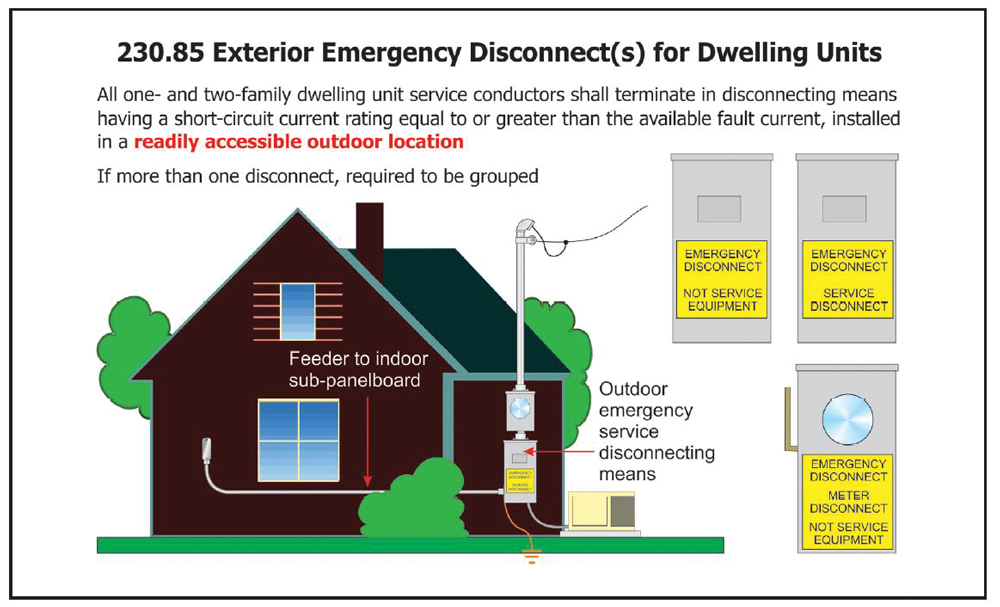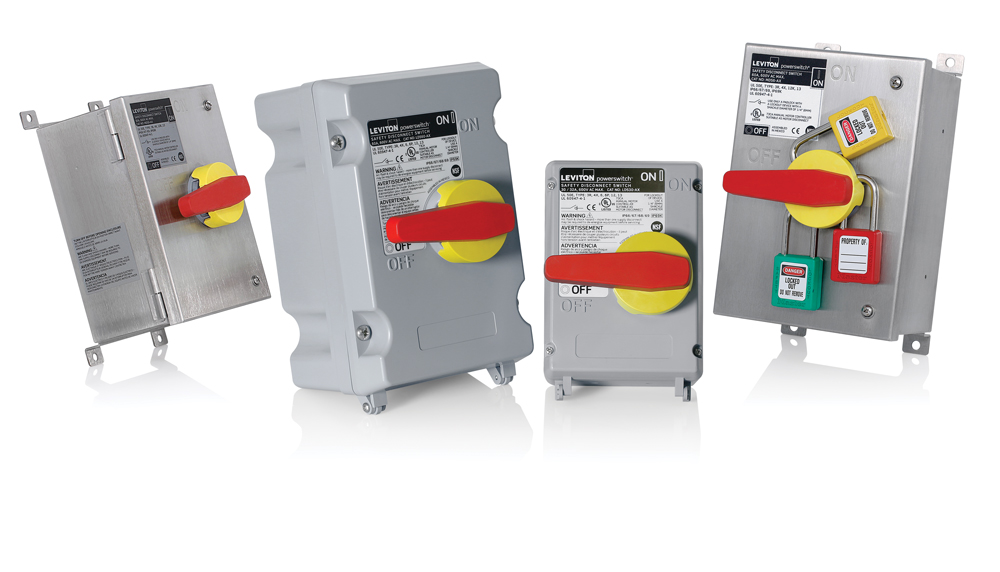230.85 Emergency Disconnect Required for Dwelling Units in a Readily Accessible Location
Change Summary
- New requirement added to require an emergency disconnect at a readily accessible outdoor location for dwelling units. The service disconnecting means can still be installed at a readily accessible location and located outside the building or inside nearest the point of entrance. However, an emergency disconnecting means (which could include the service disconnecting means) for a one- or two-family dwelling is now required to be installed and located on the outside of the structure. An initiation device for the rapid shutdown of a PV system is still required to be installed at a readily accessible location outside the building for one-family and two-family dwellings.
| NEC® Text |
|---|
|
230.85 Emergency Disconnects. Material taken from the National Electric Code® is reprinted with permission from NFPA 70®, 2020 edition. |
Expert Analysis
For the 2020 NEC, requirements will be put in place demanding that an emergency disconnecting means for a one- or two-family dwelling be installed and located on the outside of the structure. This required outdoor emergency disconnect can consist of the service disconnect(s), a properly marked meter disconnect(s), or other listed disconnect switches or circuit breakers on the supply side of each service disconnect that are suitable for use as service equipment. All of these options must be properly marked to indicate that they are service disconnects, emergency disconnects, etc. with the marking in compliance with 110.21(B).

This new requirement for a required outdoor emergency disconnecting means was primarily based upon providing first responders an outdoor accessible emergency or service disconnecting means in an emergency situation such as a fire, gas leak, structural damage, or flooding. Access to the service disconnecting means for fire department personnel first responders is very challenging when the service disconnect is installed in an indoor location of a dwelling unit area such as a basement. Additionally, with the increased use and availability of on-site generation of electrical power, such as photovoltaic (PV) power sources or energy storage devices, the lack of access to safely secure all electrical power generation devices to a residence is made even more challenging.
Will this outdoor disconnecting means increase unwanted juvenile or mischievous interruption of power to the dwelling unit? Hopefully, with the ability to place a lock on this outdoor disconnect and the occupant having access to the disconnect with a key should eliminate this concern.
It is noteworthy to point out that a similar requirement was initiated for the 2017 NEC in Article 690 for photovoltaic (PV) systems as the rapid shutdown initiator device for a PV system is also required to be located on the outside of the building for one- and two-family dwellings.
This same basic requirement for an emergency disconnect at a readily accessible outdoor location for dwelling units was implemented for the following equipment in the following locations: 445.18(D) (Generators); 480.7(A) (Storage Batteries); 694.22(C)(1) (Wind Electric Systems); 706.15(A) (Energy Storage Systems).
Leviton Comment
Additional requirements regarding signage for dwelling optional stand-by generator disconnects can be found at Article 702.7(A) on page 126 of this pocket guide.
Leviton Solution
Appropriate for applications up to 100 Amps, Leviton offers a full line of Enclosed Safety Disconnect Switches including the PowerSwitch Enclosed Safety Disconnect Switch Product Line: DS and EDSR Series
- The DS Series of 30-Amp to 100-Amp, fused and non-fused enclosed switches
- The EDSR Series which brings a 30-Amp, non-fused safety disconnect switch and NEMA locking receptacle into the same enclosure for easier installation and maintenance
- The MDS30-AX, our 30-Amp, non-fused stainless steel enclosed disconnect switch
Heavy Duty Enclosed Safety Disconnect Switches cut power to the circuit for equipment servicing and are designed to withstand higher short circuit currents than manual motor controllers. Watertight and dust-tight, PowerSwitch Safety Disconnect Switches are the ideal choice for process environments with particulate laden air, outdoor exposure, or requiring water washdowns.








